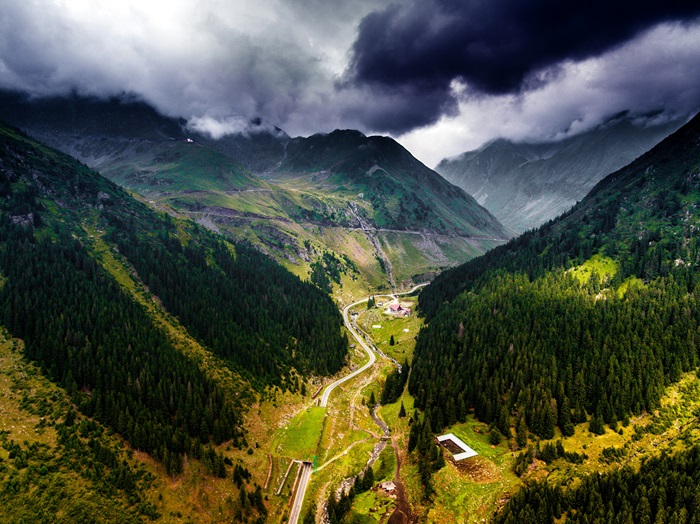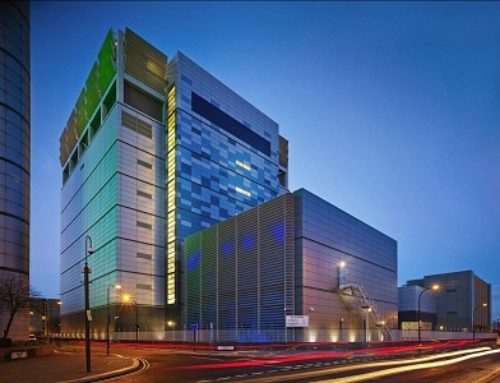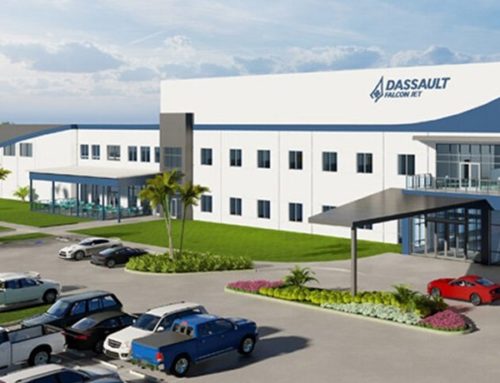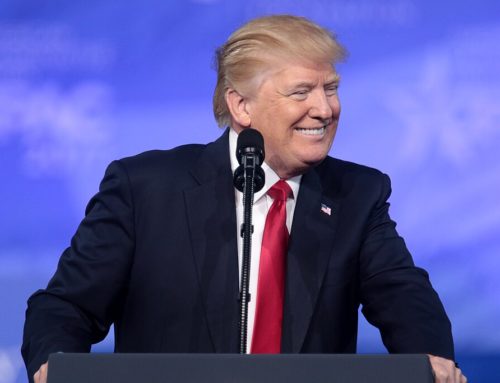1. Romania’s Energy Powerhouse Goals
Romania’s strategic efforts to position itself as a key energy player in Europe have garnered attention. Let’s delve into the fascinating aspects of Romania’s energy landscape:
1. Energy Potential:
-
- Romania stands as the second largest producer of natural gas within the European Union, trailing only behind the Netherlands.
- On a daily basis, it produces 25 to 26 million cubic meters of gas, which is sufficient to meet its summer consumption needs. However, during colder seasons, this falls short.
- The real game-changer lies in Romania’s untapped gas reserves in the Black Sea. Estimates suggest that its onshore reserves amount to 100 billion cubic meters, while offshore reserves in the deep Black Sea waters range from 42 to 84 billion cubic meters. These resources could potentially make Romania the EU’s largest net exporter of natural gas.
- Additionally, the development of liquefied natural gas (LNG) infrastructure in Romania’s Black Sea territories could significantly impact the EU’s clean energy transition.
2. Renewable Energy:
-
- Romania has been capitalizing on renewable energy sources. Its 208 hydrological plants contribute approximately 30% of its energy production.
- Wind, photovoltaic, and biomass resources account for an additional 16% of the country’s energy portfolio (expected to increase to 30% by 2030).
- During summer months, Romania’s renewable energy potential reaches its zenith. For instance, in July 2021, over half of the energy generated came from these sources.
3. Nuclear Energy:
-
- Romania relies significantly on nuclear energy. The nuclear reactors at Cernavodă contribute 20% of its energy capacity.
- With US assistance, Romania plans to build two more reactors: Cernavodă 3 and 4.
- Moreover, Romania aims to be the first European country to deploy small-size modular reactors, expected to be operational by 2027-28.
4. Regional Energy Security:
-
- Romania’s proximity to Ukraine, which shares a border, has intensified its push for regional energy security.
- As European countries seek to diversify their energy sources away from Russia, Romania emerges as a future European energy hub.
- Investments in infrastructure and competitive market mechanisms could propel Romania into a significant role as a gas supplier and a vital transportation hub.
The EU
The European Union (EU) has been actively supporting Romania’s energy goals through various initiatives and collaborative efforts. Here are some key ways in which the EU contributes to Romania’s energy landscape:
National Energy and Climate Plan (NECP) Implementation:
The EU has assisted Romania in developing and implementing its National Energy and Climate Plan (NECP), which was adopted in October 2021.
The NECP outlines Romania’s energy and climate objectives, including targets for renewable energy, energy efficiency, and emissions reduction.
By aligning with the NECP, Romania receives guidance and support from the EU to achieve its energy transition goals1.
Recovery and Resilience Plan:
As part of the EU’s Recovery and Resilience Facility, Romania has access to substantial funding for energy-related projects.
Reforms and investments totalling €1.2 billion will support clean energy production by:
- Phasing out coal and lignite power production.
- Deploying renewable energy sources.
- Advancing hydrogen technologies.
- Additionally, the plan allocates €2.9 billion for energy-efficiency renovations and seismic consolidation of buildings2.
Energy Efficiency Investment Fund (FIEE):
Romania is considering establishing an energy efficiency investment fund (FIEE) financed by private, public, and EU funds.
The FIEE aims to co-finance decarbonization technologies, renewable energy projects, and energy efficiency initiatives.
It may utilize revenues from the EU Emissions Trading System (ETS) auctions and other support mechanisms3.
Long-Term Strategy Development:
The EU has supported Romania in drafting its Long-Term Strategy for energy and climate.
This strategy, due since December 2019, outlines Romania’s vision for sustainable energy development beyond the short-term goals.
By collaborating with the EU, Romania can align its long-term energy plans with EU-wide objectives.
In summary, the EU’s financial assistance, policy guidance, and collaborative frameworks play a crucial role in advancing Romania’s energy ambitions and ensuring a sustainable and resilient energy sector within the country.
2. SK Hynix’s $3.8 Billion Investment: Pioneering the Future of AI Chips in Indiana

Credit Owen Rupp via Unsplash
In a bold move that reverberates across the global tech landscape, South Korea’s semiconductor giant, SK Hynix, has set its sights on the heartland of the United States. With an estimated investment of $3.87 billion, SK Hynix is poised to construct an advanced packaging fabrication and R&D facility in the vibrant city of West Lafayette, Indiana.
Unveiling the Vision
At the core of this audacious endeavor lies a singular purpose: to revolutionize the world of artificial intelligence (AI) chips. SK Hynix, renowned as the world’s leading producer of High-Bandwidth Memory (HBM) chips, is venturing into uncharted territory. This ambitious project marks the first of its kind on American soil, promising to reshape the nation’s AI supply chain.
The Power of Next-Generation HBM
The beating heart of SK Hynix’s new facility will be an advanced semiconductor production line dedicated to mass-producing next-generation HBM. These high-performance Dynamic Random Access Memory (DRAM) chips are the very building blocks that fuel graphic processing units (GPUs) driving AI systems. Imagine the ChatGPTs and neural networks of tomorrow, powered by the ingenuity emanating from West Lafayette.
A Thriving Ecosystem
Why Indiana? The answer lies in the state’s resilient manufacturing infrastructure and robust R&D ecosystem. Here’s what makes Indiana the ideal canvas for SK Hynix’s masterpiece:
1. Intellectual Capital:
With Purdue University as its bedrock, Indiana boasts a pool of brilliant minds in the semiconductor field. The convergence of academia and industry fuels innovation.
2. Government Support:
Indiana’s unwavering commitment to fostering technological growth has won the hearts of investors. The state and local government provide a sturdy foundation for SK Hynix’s vision.
3. Supply Chain Resilience:
As global competition intensifies, securing a foothold in the AI memory semiconductor industry demands strategic foresight. Indiana’s robust infrastructure ensures supply-chain resilience.
A Thousand New Jobs
Beyond silicon wafers and circuitry, this venture breathes life into the region. The project is expected to create over a thousand new jobs, spanning engineering, technical support, administration, and maintenance. West Lafayette will hum with the energy of innovation, as SK Hynix pioneers the future of AI.
In the heart of the Midwest, where cornfields meet cutting-edge technology, SK Hynix’s investment resonates as a testament to collaboration, vision, and the boundless possibilities of the digital age.
Purdue University partnership
1. Investment and Vision:
- SK Hynix plans to invest a staggering $3.87 billion in constructing an advanced packaging fabrication and R&D facility for AI products within the Purdue Research Park.
- This investment represents the largest single economic development in the history of the state of Indiana.
- The facility aims to be a catalyst for the creation of a new Silicon Heartland, positioning the Midwest Triangle as a semiconductor ecosystem hub.
2. AI Memory Chips and HBM:
- The heart of SK Hynix’s new facility will house an advanced semiconductor packaging production line.
- This production line will be dedicated to mass-producing next-generation High-Bandwidth Memory (HBM) chips.
- HBM chips are critical components of graphic processing units (GPUs) that power AI systems like ChatGPT and neural networks.
3. Job Creation and Long-Term Commitment:
- The project is expected to generate over a thousand new employment opportunities in the Greater Lafayette community.
- SK Hynix’s decision reflects its intention for long-term investment and partnership in the region.
- The company prioritizes both profit and social responsibility, aiming to contribute to community empowerment and skill development.
4. Indiana’s Strengths:
- Why Indiana? The state boasts a resilient manufacturing infrastructure and a robust R&D ecosystem.
- Purdue University, a renowned institution, provides a pool of brilliant minds in the semiconductor field.
- Indiana’s government support and supply chain resilience make it an ideal canvas for SK Hynix’s ambitious venture.
In summary, this collaboration between SK Hynix and Purdue University marks a significant leap forward in the U.S. semiconductor industry. It not only strengthens the AI supply chain but also propels Indiana into the forefront of technological innovation.
3. Statevolt to Launch $3.2 Billion State-of-the-Art Battery Gigafactory in Ras Al Khaimah, UAE
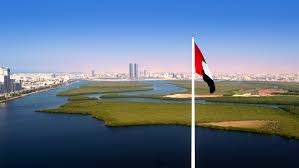
Credit Fadi Fayad Al Taoba via Wiki
Statevolt, a global leader in green industrialization, has unveiled ambitious plans to construct a state-of-the-art, technology-agnostic battery cell Gigafactory in Ras Al Khaimah, UAE. With a capital expenditure of US$3.2 billion, this venture, known as Statevolt Emirates, is poised to revolutionize the energy storage sector (ESS) and drive technological innovation.
Key Highlights:
1. Modular Design Approach:
Statevolt Emirates will implement a modular design approach, allowing for a faster route to market and the flexibility to diversify production based on technology readiness. This strategic approach ensures adaptability and scalability.
2. Safety and Extended Lifecycle:
The Gigafactory aims to set a new standard in battery technology. Its superior safety features and extended lifecycle make it a game-changer in the industry.
3. Initial Focus:
The factory will initially produce semi-solid state battery cells, with plans to transition to solid state battery cells as the project reaches full capacity.
4. Job Creation:
Spanning 60 hectares in the Al Hamra Industrial Zone within RAKEZ, the Gigafactory is anticipated to generate up to 2,500 direct job opportunities. This significant economic development will benefit Ras Al Khaimah and the surrounding region.
5. Global Energy Transition:
Under the leadership of entrepreneur Lars Carlstrom, Statevolt Emirates is committed to low-carbon energy solutions. Carlstrom’s vision leverages technological innovation for global energy transformation and local economic enhancement.
6. Strategic Export Markets:
The Gigafactory strategically targets key export markets, including Africa, India, the UAE, and the broader Middle East region. With an expected annual production capacity of up to 40GWh, Statevolt is well-positioned to address the growing need for sustainable energy management.
7. UAE’s Vision:
This project aligns with the UAE’s strategic vision to become a leading hub for green technology and energy transition, reinforcing the country’s position as a leader in sustainable industrial development.
4. New Brexit Border Tax Triggers UK Business Backlash

Credit Immanuel Giel White Cliffs of Dover
Details of the new post-Brexit charges for food and plant imports from the EU have sent shockwaves through the business community. Described as a “hammer blow” for businesses, these charges are set to take effect in less than a month, leaving companies scrambling to prepare.
The Charges Unveiled
The UK government recently outlined the costs that businesses importing produce from the EU will face. These charges, which have been delayed five times, will apply from April 30. Here’s a breakdown:
- Low-risk goods: £10
- Medium and high-risk products (both animal and plant origin): £29 per consignment
- Mixed consignments: Capped at £145
Business Backlash
Trade bodies wasted no time expressing their anger over these plans. The fear is that these charges will:
- Push up prices: As European suppliers withdraw from the UK, businesses anticipate inflationary pressures.
- Limit consumer choice: The additional costs may lead to reduced availability of certain goods.
- Disproportionately affect small businesses: While larger companies can absorb the cost, smaller enterprises may see their profits wiped out entirely.
Marco Forgione, Director General of the Institute of Export & International Trade, emphasized the impact on small and medium-sized businesses. He warned that the UK could become less attractive for trade with EU-based smaller businesses due to the added financial burden.
A Disappointing Shift
While the UK does not impose tariffs on EU goods, the flat “common user charge” is designed to cover the cost of veterinary and health inspections on animal and plant products. Smaller importers, who often share containers or lorries, will be hit hardest by this fee structure. The concern is that these charges could ultimately alter the dynamics of trade between the UK and the EU.
UK businesses are actively taking steps to prepare for the impending New Brexit Border Tax. Here are some notable actions they are undertaking:
1. Understanding the Charges:
Businesses are closely studying the details of the new charges. The UK government recently outlined the costs that businesses importing produce from the EU will face, including charges for checks on goods coming into the country through Dover and the Eurotunnel. This understanding is crucial for informed decision-making.
2. Assessing Impact:
Companies are evaluating how these charges will affect their operations. The charges vary based on the type of goods imported:
- Low-risk goods: £10 per product line
- Medium and high-risk goods (including most meat, dairy, and plant products): £29 per item type
- Mixed consignments: Capped at £145
Businesses are calculating the financial impact and considering necessary adjustments.
3. Range of Goods:
Trade bodies, retailers, and small firms are concerned that the new charges could force them to limit the range of items they can offer. Some may have to push up prices, affecting consumer choice. Small plant sellers, for instance, may find it unfeasible to import certain products from the continent.
4. Financial Preparedness:
Smaller businesses, which often deal with mixed consignments, are particularly affected. The additional financial burden could wipe out profits entirely for some. Larger businesses have more capacity to absorb the cost, but small enterprises will feel the full force of these charges.
5. Seeking Support:
Some businesses are seeking professional advice about customs and VAT. The UK government has launched the SME Brexit Support Fund, which provides financial assistance for training or advice related to importing and exporting rules.
6. Long-Term Strategies:
Businesses are considering long-term strategies to navigate the changing landscape. This includes exploring VAT refund mechanisms, understanding postponed accounting for import VAT, and adapting to digital sales requirements.
In summary, UK businesses are grappling with the implications of the New Brexit Border Tax, aiming to minimize disruptions and adapt to the evolving trade environment.
5. The Boao Forum for Asia: ‘Asian Davos’
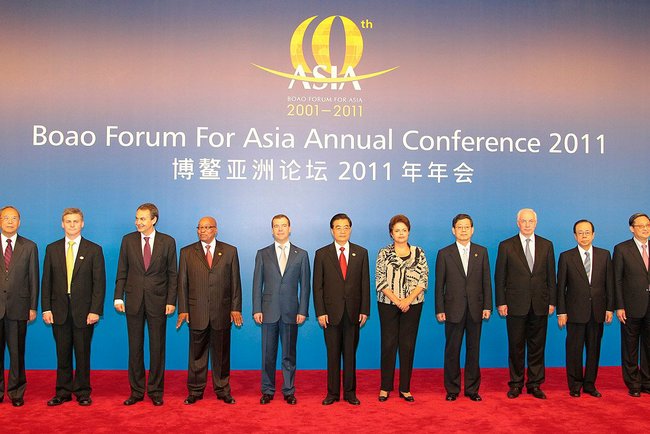
Credit Kremlin.ru Boao Forum in China 2011
The Boao Forum for Asia (BFA) is a non-profit organisation that brings together leaders from government, business, and academia across Asia and other continents. Its mission is to provide a platform for these influential figures to share their visions and insights on critical regional and global issues. Here are some key points about the BFA:
1. Origins and Inspiration:
- The BFA was initiated in 1998 by prominent leaders such as Fidel V. Ramos (former President of the Philippines), Bob Hawke (former Prime Minister of Australia), and Morihiro Hosokawa (former Prime Minister of Japan).
- It was formally inaugurated in February 2001 with the support of 26 Asian and Australasian states.
- The forum draws inspiration from the World Economic Forum (WEF) held annually in Davos, Switzerland.
2. The “Asian Davos” Connection:
- The BFA is sometimes affectionately called the “Asian Davos” due to its resemblance to the prestigious WEF gathering.
- Just as Davos serves as a meeting ground for global leaders, the BFA provides a similar platform for Asian leaders.
- The name “Boao” comes from the town of Boao in Hainan province, China, where the forum has held its annual conference since 2002.
3. Focus Areas:
- Discussions at the BFA cover a wide range of topics, including economics, integration, cooperation, society, and the environment.
- Past forums have addressed significant issues such as China’s entry into the World Trade Organization and the Southeast Asian economic crisis of the 1990s.
- Geopolitical strategies, such as China’s peaceful rise, have also been on the agenda.
4. Promoting Regional Integration:
- The BFA is committed to regional economic integration and aims to bring Asian countries closer to their development goals.
- By fostering dialogue and collaboration, it contributes to the sustainable growth and prosperity of the region.
In summary, the Boao Forum for Asia stands as a vital platform where leaders come together to shape the future of Asia and beyond. Its significance lies in its ability to foster cooperation, understanding, and progress in a dynamic and diverse continent.
Featured image Calin Stan via Unsplash

